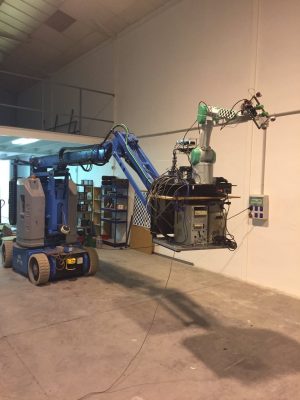Recent, exploitable, research in robotics and the associated fields of computer vision and sensors covers the components that are needed in an automated system that in one pass can perform inspection and assessment of the civil infrastructure in general and transportation tunnel infrastructure in particular.
Yet, such an automated system is cruelly missing today. The goal of this work is to offer an automated system that includes, integrated, all the required components for the inspection and assessment of tunnels in one pass. Moreover, this solution can automatically adapt to different use cases. The work includes adaptation of the existing components to fit the requirements of the specific application. Field evaluation, under actual conditions, in a variety of cases, proves the exploitability of the proposed system in the short to medium term.
Leading end users (Halcrow, EUROTUNNEL, EOAS) in charge of maintenance of major rail tunnels (e.g., London Underground, EUROTUNNEL), and road tunnels (Egnatia Motorway) and leading producers of mobile inspection equipment for tunnels (VSH (Amberg)) are offering user requirements, access to their facilities to obtain datasets and field evaluation, while a large company (CAS(EADS)), in charge of exploitation of results, is considering the new market of inspection and assessment of the civil infrastructure via robots.
One of the greatest challenges facing engineers today is the inspection, assessment, maintenance1 and safe operation of the existing civil infrastructure such as, tunnels, bridges, roads, pipelines, and much more. Due to ageing, environmental factors, increased loading, change in use, damages caused by human/natural factors, inadequate or poor maintenance and deferred repairs, civil infrastructure is progressively deteriorating, urgently needing inspection, assessment and repair work. Nowhere is this need more apparent than in underground transportation tunnels, a large number of which have been in operation for more than half a century and there are widespread signs of deterioration, evidenced by an increase in the proportion of budgets spent on inspection and assessment. Things are bad to the point that there have been a number of failures resulting in collapses in tunnels in recent years which highlighted the need for better ways to inspect and assess tunnel stability of in service tunnels. One should add here that (a) the cost of new tunnel construction is very high and, thus, inspection, assessment and repair of the existing tunnel infrastructure is of utmost importance, (b) in the coming two decades, the rate of expansion of the transport infrastructure in the European Union (EU) will not keep pace with the increase in transport demand necessitating the maximization of the operational uptime of tunnels and, thus, maintenance should be proactive based on timely inspection and assessment, (c) the inspection and assessment should be speedy in order to minimise tunnel closures or partial closures, and (d) the engineering hours for tunnel inspection and assessment are severely limited.

